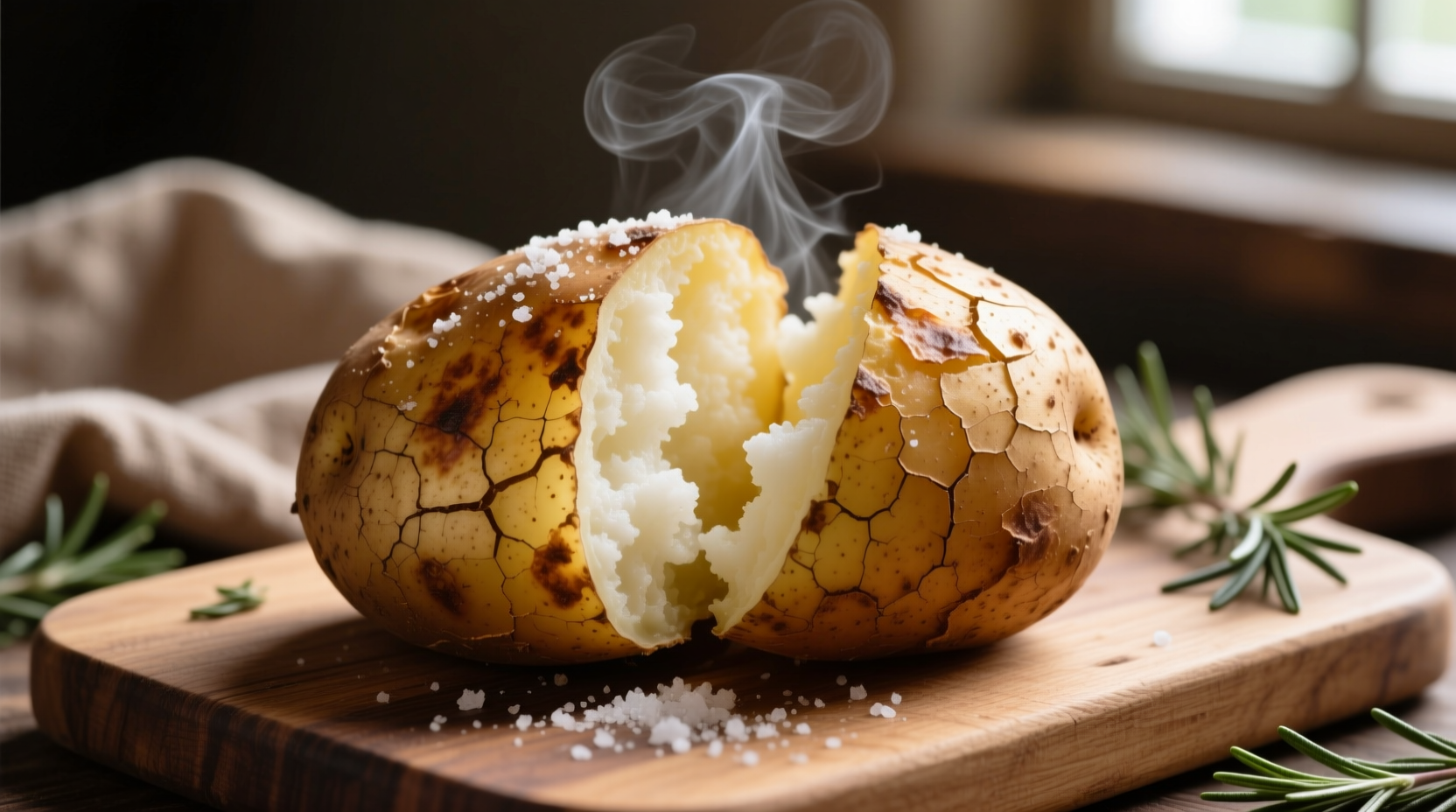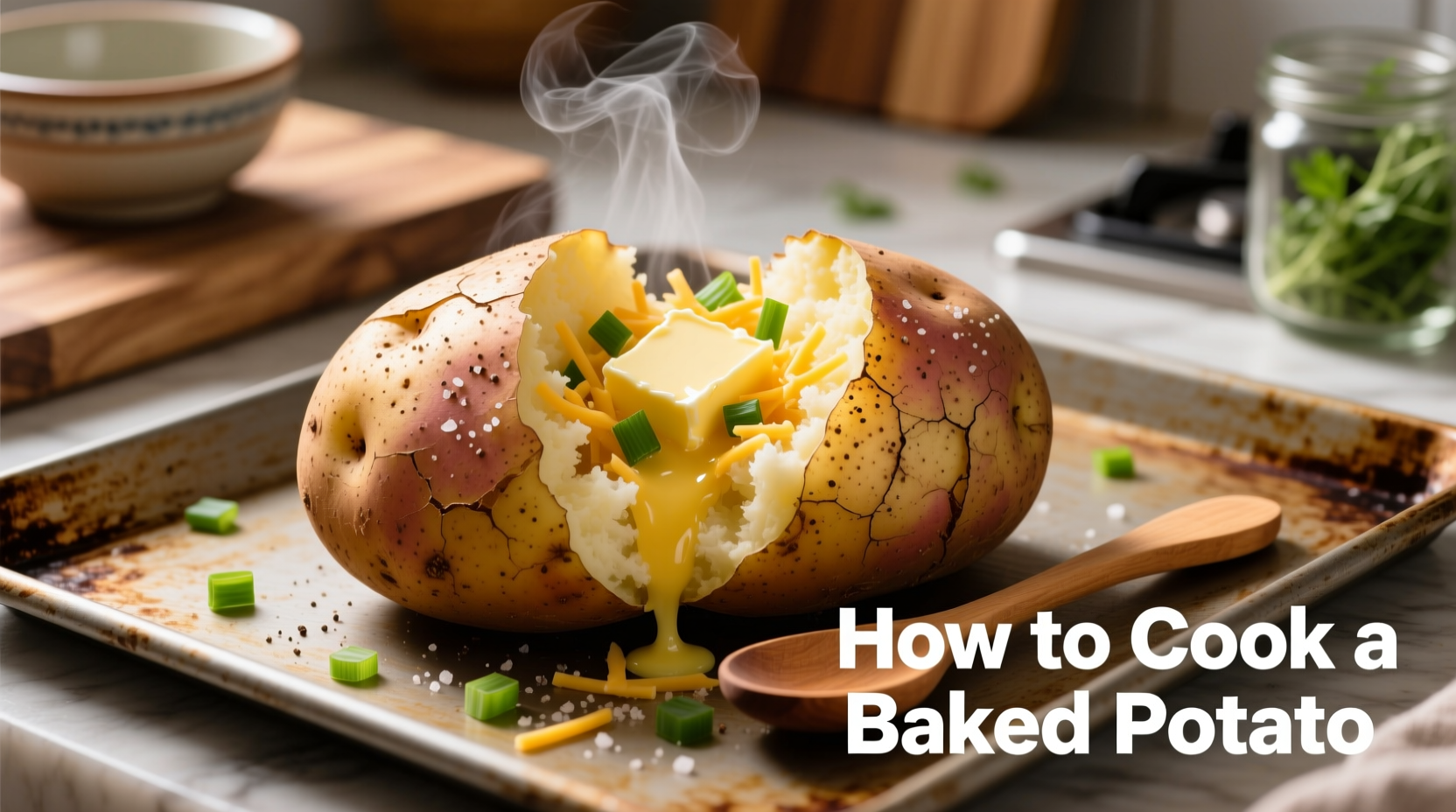The Ultimate Guide to Baking the Perfect Potato
Nothing beats a perfectly baked potato—crisp skin yielding to a light, fluffy interior. Yet many home cooks struggle with uneven cooking, soggy skins, or dry centers. This guide reveals the science-backed method professional chefs use to achieve consistent results. Whether you're cooking for one or feeding a crowd, you'll master this kitchen staple in under an hour with just three essential tools.
What You'll Need Before Starting
Gather these simple items for foolproof results:
- Russet potatoes (1-8 oz each, uniform size for even cooking)
- Baking sheet with wire rack (prevents steaming)
- Instant-read thermometer (critical for perfect doneness)
| Cooking Method | Time Required | Skin Texture | Interior Quality |
|---|---|---|---|
| Oven (direct rack) | 45-60 min | Crispy, flavorful | Fluffy, evenly cooked |
| Oven (foil-wrapped) | 50-70 min | Soft, steamed | Dense, moist |
| Micro-wave | 8-12 min | Soggy | Uneven, sometimes rubbery |
This comparison from the USDA Food Safety and Inspection Service shows why the direct-rack oven method delivers superior texture. Foil traps moisture that prevents crisp skin development, while microwaves create uneven starch gelatinization.
Step-by-Step Baking Process
1. Selecting & Preparing Your Potato
Choose firm russets without green spots or sprouts—these contain solanine, a naturally occurring compound that can cause digestive upset. According to agricultural research from The National Potato Council, russets have the ideal starch-to-moisture ratio for baking. Scrub thoroughly under cold water to remove dirt, but never soak potatoes—this waterlogs the exterior and prevents crisp skin.
2. The Critical Pricking Step
Use a fork to make 6-8 deep pricks around each potato. This allows steam to escape during cooking, preventing dangerous pressure buildup. Food scientists at Cornell University's Food Safety Lab confirm that unpricked potatoes can explode in ovens—a rare but documented hazard.
3. Oven Setup & Placement
Preheat to 400°F (204°C) with rack in the center position. Place potatoes directly on the rack with a baking sheet on the lower rack to catch drips. This airflow maximizes crispness—never wrap in foil for traditional baking. For extra-crispy skin, rub with 1 tsp oil and ¼ tsp coarse salt before baking.
4. Timing Based on Size
Follow this USDA-approved timeline for perfect results:
- Small (5-6 oz): 40-45 minutes
- Medium (7-8 oz): 45-55 minutes
- Large (9-10 oz): 55-65 minutes
Always verify doneness with an instant-read thermometer—210°F (99°C) at the center is the food safety standard for fully cooked potatoes.
Troubleshooting Common Issues
Soggy skin? Your oven temperature was too low or airflow was restricted. Ensure proper preheating and avoid overcrowding.
Dry interior? Overcooking by more than 10 minutes causes moisture loss. Use the thermometer method for precision.
Uneven cooking? Rotate potatoes halfway through baking. Larger specimens may need repositioning toward the back of the oven.
Pro Serving Techniques
Let potatoes rest 5 minutes after baking—this allows starches to set for optimal texture. Slice lengthwise, fluff gently with a fork, and add toppings. For restaurant-style presentation:
- Butter first: Melts into fluffy interior
- Salt second: Enhances natural flavor
- Toppings last: Sour cream, chives, or bacon

Storage & Reheating Guide
Cool completely before refrigerating in an airtight container for up to 5 days. To reheat without drying:
- Preheat oven to 350°F (177°C)
- Wrap in damp paper towel
- Bake 15-20 minutes until center reaches 165°F (74°C)
Microwave reheating often creates rubbery texture—reserve this method for time-critical situations only.
When This Method Works Best
This technique shines for:
- Weeknight dinners (hands-off cooking)
- Dinner parties (bakes alongside main courses)
- Cold weather months (complements hearty meals)
Consider alternatives when:
- You need potatoes in under 20 minutes (try microwave method)
- Preparing for meal prep (bake multiple at once)
- Outdoor cooking (grill method works well)











 浙公网安备
33010002000092号
浙公网安备
33010002000092号 浙B2-20120091-4
浙B2-20120091-4